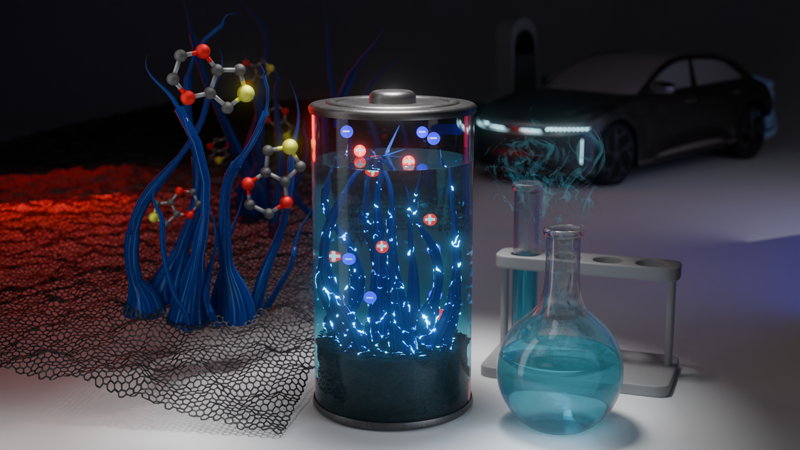In the USA, a plastic supercapacitor of record capacity was created using graphene


Supercapacitors have a significant role to play in promoting carbon-free energy. They are able to quickly accumulate a high-power charge and just as quickly release it to consumers, which is in demand, for example, in electric vehicles in energy recovery modes during braking. Therefore, the development of new materials for supercapacitors does not stop and is bearing fruit, as confirmed by new research.


Image source: UCLA
In particular, the University of California at Los Angeles (UCLA) has developed a technology for the production of promising supercapacitors with better characteristics than their modern counterparts. But the most interesting thing is that a polymer that is more than 40 years old was used as a material for accumulating charge. The researchers used poly(3,4-ethylenedioxythiophene), or PEDOT for short. This plastic is widely used in electronics and displays because it can be transparent.
The problem with all supercapacitors is that they accumulate charge in a thin surface layer. To accumulate more charge, the surface area of the electrode should be as large as possible. This is precisely the task facing scientists from UCLA – to develop a technical process for growing a polymer electrode with the largest possible area. The researchers successfully solved it: they proposed growing PEDOT polymer fibers, like grass on a lawn, using graphene as a substrate and vapor-depositing the polymer to produce long fibers.
«The material’s unique vertical growth allows us to create PEDOT electrodes that store much more energy than traditional PEDOT [films], said Maher El-Kady, corresponding author and materials scientist at the University of California, Los Angeles. “Electrical charge builds up on the surface of the material, and traditional PEDOT films do not have enough surface area to hold a very large charge. “We increased the surface area of PEDOT and thus its capacitance enough to create a supercapacitor.”
The supercapacitor created in this way showed a capacity of 4600 mF/cm², which is significantly higher than that of conventional polymer films of the same material. This is about four times more than modern supercapacitors based on the same base. Also, the new development provides a 100-fold improvement in conductivity and can withstand 70 thousand charge and discharge cycles. Scientists are confident that this new product is the future.
Recent Posts
- Mobile phones, smartphones, cellular communications, communicators, PDAs
- Technology and IT market. news
OnePlus 13T Compact Flagship Announced with Snapdragon 8 Elite, Capacious Battery, and Price Starting at $450
OnePlus has unveiled its flagship smartphone, the OnePlus 13T, which features a relatively compact size,…
- Mobile phones, smartphones, cellular communications, communicators, PDAs
- Technology and IT market. news
OnePlus 13T Compact Flagship Announced with Snapdragon 8 Elite, Capacious Battery, and Price Starting at $450
OnePlus has unveiled its flagship smartphone, the OnePlus 13T, which features a relatively compact size,…
Adobe Updates AI Image Generator Firefly and Redesigns Its Web App
Adobe announced the launch of a new version of its Firefly AI model for generating…
Zeekr 9X Unveiled: A Luxury Hybrid That Can Go 380km Without Fuel
A major auto show opened in Shanghai this week, with companies vying for the wallets…
Adobe Unveils AI Agent That Will Teach You How to Use Photoshop
Adobe unveiled a built-in AI agent for Photoshop at the Adobe Max event in London…
Former Fallout 3 Designer Explains What Bethesda Needs to Improve in Fallout 3 Remastered
Following The Elder Scrolls IV: Oblivion, according to Microsoft's court documents, the post-apocalyptic role-playing game…